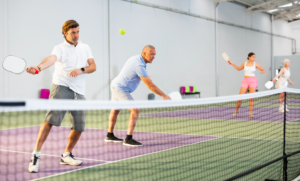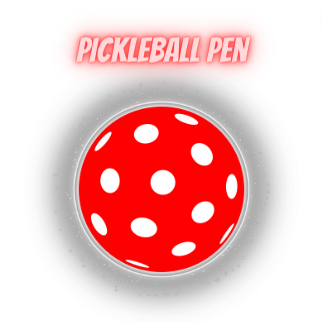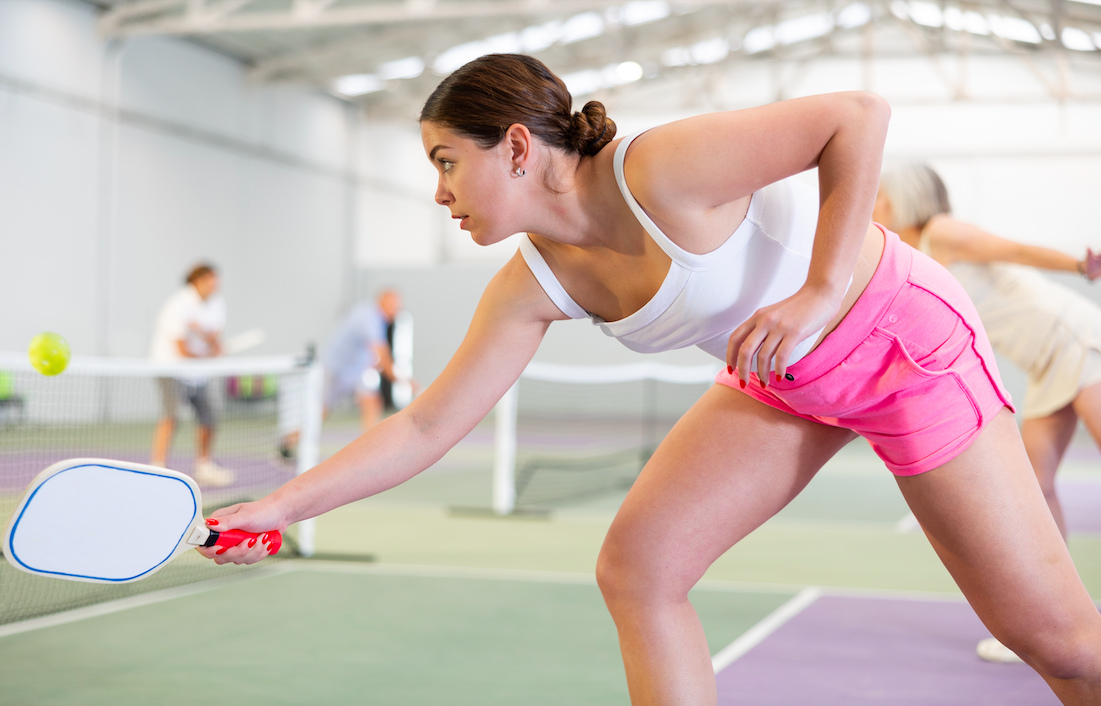Can Pickleball Be Played Indoors? Pros, Cons & Best Strategies
Do you want to enjoy a good game of pickleball but the conditions outside won’t let you? You might be wondering whether pickleball can be played indoors, or how different that might be.
The short answer is yes, it can. However, there are several factors to consider when you want to play pickleball indoors. In this guide, I cover everything you need to keep in mind when looking to play indoors.
Specifically, you’ll learn what indoor pickleball entails, how it differs from outdoor pickleball, and its pros & cons.
I also share a few strategies you can use to make playing pickleball indoors easy, fun, and competitive, just like playing outdoors.
Can Pickleball Be Played Indoors?
As I mentioned earlier, you can play pickleball indoors. This is partly why the game is becoming more popular in the U.S.
The fact that you can play a pickleball game indoors and outdoors makes it a non-seasonal sport people enjoy all year round. You could play outdoors when the weather allows and switch to playing indoors when it doesn’t.
However, moving from indoor to outdoor pickleball and vice versa isn’t easy. Let’s look at some of the key differences below.
It’s worth noting that you can play indoor pickleball professionally, but most people prefer playing indoor pickleball to gain the skills needed to play outdoors. Either way, knowing the difference between indoor and outdoor pickleball is essential to having a good game inside.
What Does Indoor Pickleball Entail?
The main difference between indoor games and those played outdoors is the setting.
It may be an enclosed court in gymnasiums, schools, churches, or other private facilities like sports clubs. Outdoor pickleball areas are often public spaces, such as recreational parks with designated pickleball or tennis courts.
Both indoor and outdoor pickleball require similar equipment – pickleball paddles and a ball. However, the ball used indoors differs from the one used to play pickleball outdoors.
The difference between indoor vs. outdoor pickleball balls is one of the most critical factors to consider when you want to play indoors.
You need to use the right ball for each setting to play the game by the set rules. The type of ball also affects indoor and outdoor play. It’s essential for optimal play comfort.

Indoor Pickleball Balls Vs. Outdoor Pickleball Balls
There are four main differences between an indoor and outdoor ball:
- Hardness – Most manufacturers use plastic to make pickleball balls. The type of plastic used to make indoor balls is lighter and softer than outdoor balls, which are thicker and more hardened.
Using harder plastic on outdoor balls minimizes wind disruption. Softer plastic on indoor balls, on the other hand, gives you more control during indoor play.
- Weight – Outdoor balls are slightly heavier than indoor ones. The weight increases wind resistance. It also makes the ball move faster and bounce lower, affecting the speed of outdoor pickleball play.
- Number and diameter of holes – Indoor pickleball balls have fewer holes–around 26– compared to outdoor ones, which have about 40 smaller holes. The holes on an indoor ball are also wider than an outdoor pickleball ball.
This feature maintains the trajectory and consistency of every shot you take during indoor play.
- Durability – The softer, lighter plastic used to make indoor balls makes them more durable than outdoor ones. They’re less prone to cracking, splitting, or losing shape.
In general, understanding how to work with each type of pickleball ball informs the strategies you use in indoor vs. outdoor games.
Other Key Differences Between Indoor and Outdoor Pickleball
In addition to ball design, there are two main differences between indoor and outdoor pickleball to consider when learning to play indoors, including
The Floor or Court Surface
Indoor courts are soft, wooded surfaces, whereas outdoor courts are hard surfaces with concrete, tile, or asphalt. The smooth surface of indoor pickleball courts alters how the ball moves. It slows the ball down and causes it to change direction more than a hard surface.
Also, the ball skids and skips more on an indoor pickleball court than on an outdoor court. As a result, you need to be more strategic when playing pickleball on indoor surfaces. The hard surfaces of outdoor pickleball courts are easier to work with and maneuver around.
Natural Elements
Several external factors, like varying weather conditions, affect the game when you play outdoors. It’s different from playing pickleball indoors, where the setting is controlled. A slight breeze can blow away an outdoor pickleball ball and change its direction, affecting your shot.
Some outdoor pickleball players prefer playing in calm conditions. But some competitive players welcome a little wind because it makes outdoor play more challenging and fun.
The wind makes it harder to predict the direction the ball will take. So players have to stay alert not to miss the ball.
The sun may also affect playing the game on outdoor pickleball courts. It can prevent a pickleball player from seeing and tracking the ball when it shines bright, especially during Summer.
Pros and Cons of Indoor Pickleball
Like other indoor sports, playing pickleball indoors has several pros and cons.
Pros
- Continuous or uninterrupted play – The rain, wind, and sun cannot interfere with your game indoors.
- Higher maintenance of indoor pickleball courts prevents indoor court surfaces from getting bumpy and uneven. You can always expect a consistent ball bounce and shot speed.
- Indoor venues offer a range of amenities, including showers and locker rooms.
Cons
- The lack of open-air ventilation can be irritating for some players
- In most cases, indoor pickleball courts are temporary, borrowing space from other sports like basketball and badminton. All the markings of multiple indoor courts can be confusing.
It’s also easier to hit other surfaces, like a basketball hoop, which pauses games and wastes time.
- Expensive – playing indoors is more costly than outdoors because you might need to rent indoor space for a limited time. Almost all outdoor pickleball courts are free to use.
Best Strategies for Playing Pickleball Indoors
The different balls and floor material used to make a pickleball court indoors determines the strategy to use when playing.
Because indoor pickleball balls have fewer, larger holes, they are airier, slower, and bounce higher than outdoor ones.
I recommend using more drives than drops in an indoor game, although you’ll have to be careful and ensure they don’t go out of bounds. You might also want to use spins on your dinks or returns since the wooden indoor surface allows the ball to skip and skid.
Final Thoughts
As we’ve seen, playing pickleball indoors differs from playing outdoors, even though the rules that guide play in both settings are the same.
If you’re wondering whether to play indoor or outdoor pickleball, try playing in both settings. It will help you decide which option works better for you. You might also want to visit our blog and subscribe to our newsletter for the latest tips and strategies to improve your performance for both indoors and outdoors.

